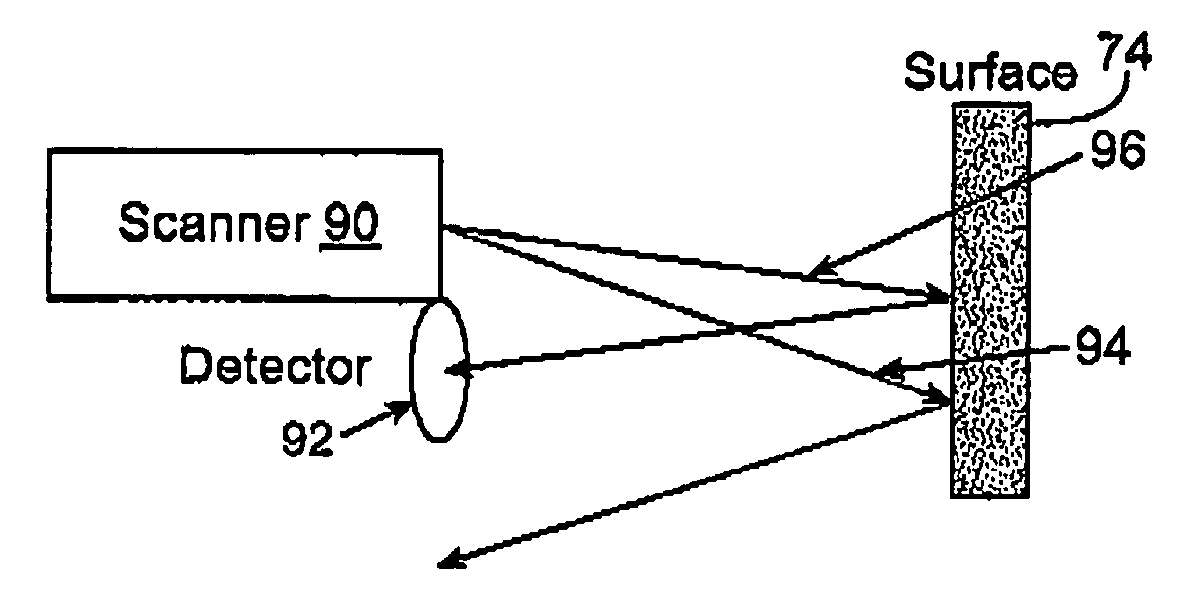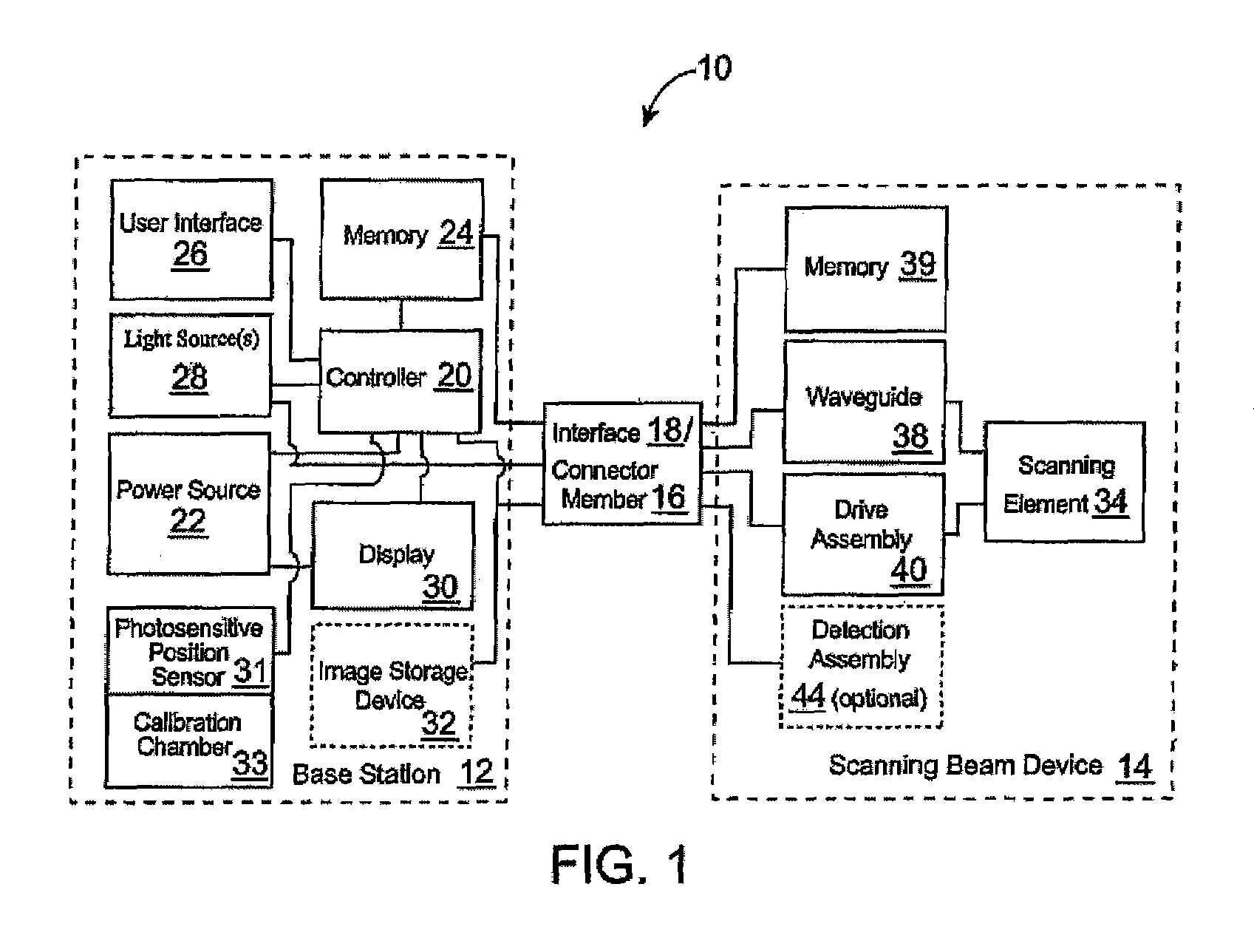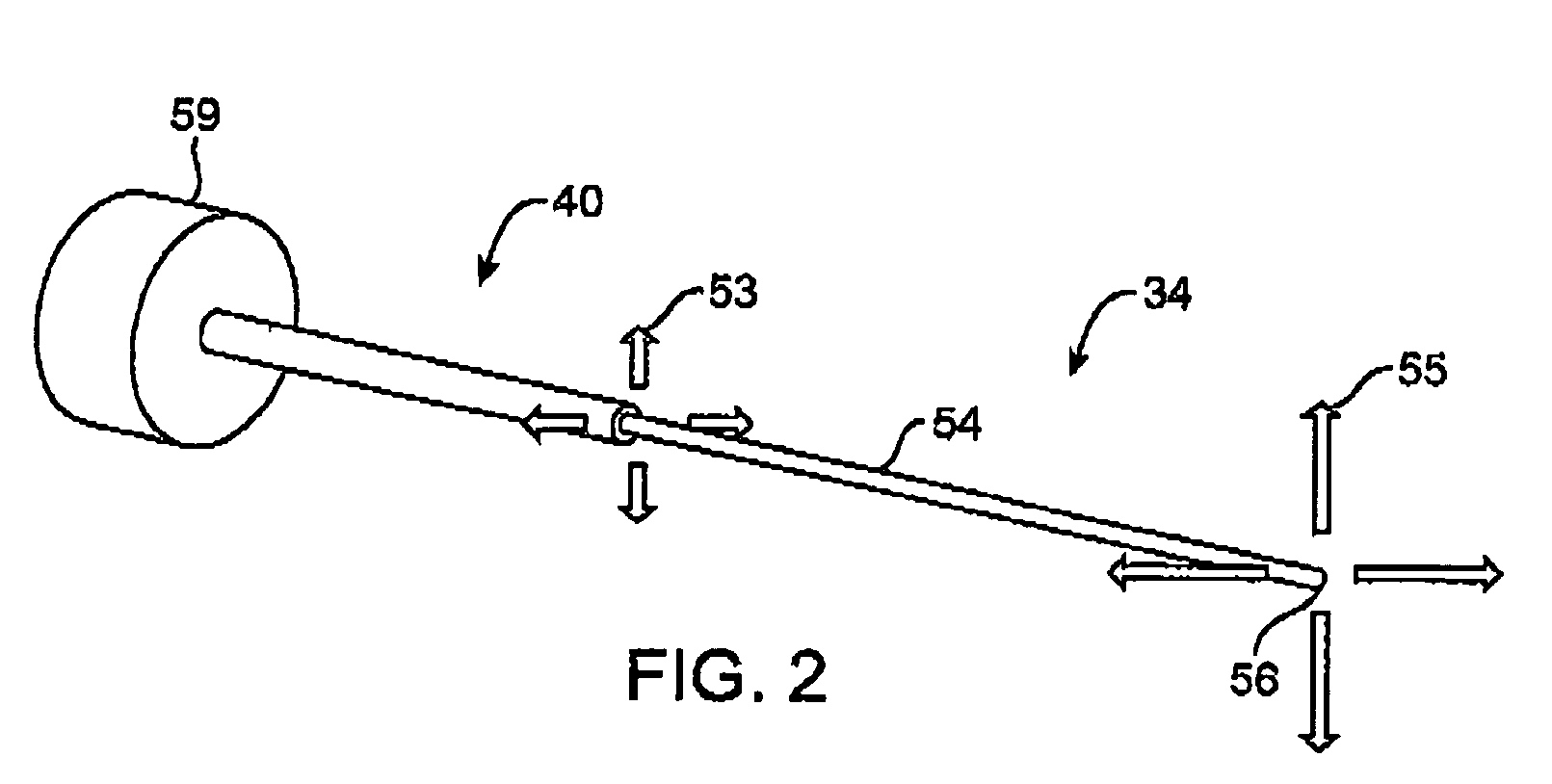Distance determination in a scanned beam image capture device
a technology of distance determination and image capture device, which is applied in the field of distance determination in a scanned beam image capture device, can solve the problem that images may contain somewhat limited depth information, and achieve the effect of being easily identified and separated
- Summary
- Abstract
- Description
- Claims
- Application Information
AI Technical Summary
Benefits of technology
Problems solved by technology
Method used
Image
Examples
Embodiment Construction
[0029]The present invention generally provides improved scanned beam devices, systems, and methods. The improved scanned beam techniques will often provide spatial information (such as separation distance, an angle, or even a contour map) of a target surface, typically using spectral reflections from the target surface.
[0030]The scanning beam systems of the present invention will often include a scanning beam device or probe and a base station for controlling the scanning beam device. The scanning beam devices may take on a variety of forms, but will typically comprise a flexible or rigid endoscope, catheter, fiberscope, microscope, boroscope, or the like. The scanning beam devices may have a limited life (e.g., being disposable) or may be multiple-use devices. If the device is for medical use, the scanning beam devices will generally be sterile, either being sterilizable or being provided in hermetically sealed packages for use.
[0031]The scanning beam devices or probes will often i...
PUM
 Login to View More
Login to View More Abstract
Description
Claims
Application Information
 Login to View More
Login to View More - R&D
- Intellectual Property
- Life Sciences
- Materials
- Tech Scout
- Unparalleled Data Quality
- Higher Quality Content
- 60% Fewer Hallucinations
Browse by: Latest US Patents, China's latest patents, Technical Efficacy Thesaurus, Application Domain, Technology Topic, Popular Technical Reports.
© 2025 PatSnap. All rights reserved.Legal|Privacy policy|Modern Slavery Act Transparency Statement|Sitemap|About US| Contact US: help@patsnap.com



